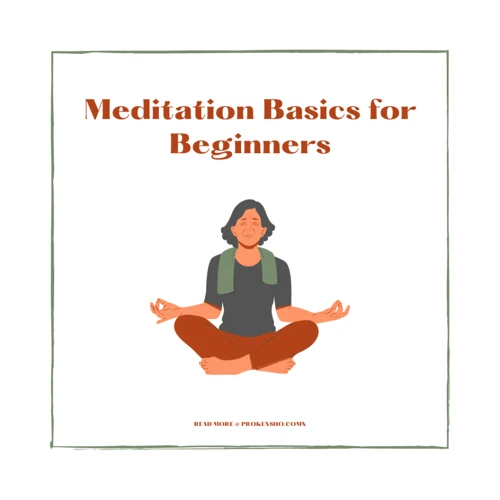Introduction
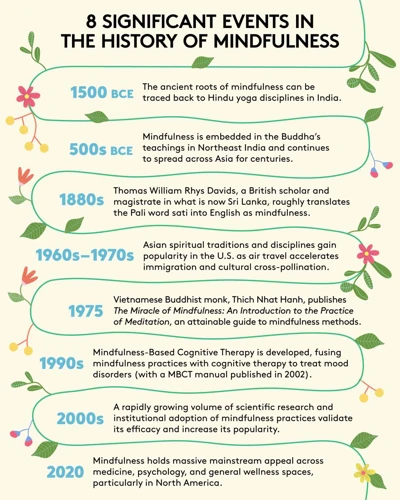
As life becomes increasingly hectic, we often find ourselves stressed and overwhelmed. One way to cope with these feelings is through the practice of guided meditation. Using this method, you can learn how to quiet your mind and focus your thoughts, ultimately leading to a greater sense of calm and balance in your life. In this article, we will explore the ins and outs of practicing guided meditation effectively. From preparing for your session to embracing silence and stillness, we will cover everything you need to know to make the most of your meditation practice.
Understanding Guided Meditation
Guided meditation is a mindfulness technique that uses verbal guidance from a teacher or meditation guide to lead you through a meditation practice. It is also known as guided imagery, visualization, or guided relaxation. The purpose of guided meditation is to help you achieve a state of peace, relaxation, and inner stillness by focusing your attention on a specific object or mental image.
Benefits of Guided Meditation
Guided meditation can have many physical, emotional, and mental benefits, including:
- Reducing stress and anxiety
- Improving sleep quality
- Lowering blood pressure and heart rate
- Boosting the immune system
- Increasing feelings of well-being and happiness
- Improving concentration and focus
- Enhancing self-awareness and self-acceptance
- Reducing symptoms of depression and chronic pain
How Guided Meditation Works
During guided meditation, you listen to the instructions of a guide who helps you focus your attention on specific thoughts, sounds, sensations, or feelings. The guide’s voice will help you stay present and focused, and guide you through the meditation process.
Guided meditation can be practiced in groups, or using meditation apps or recordings. It often involves visualization, which uses mental images to promote relaxation and reduce stress.
By practicing guided meditation regularly, you can learn to develop your own ability to focus your mind and achieve a state of inner calm and balance.
Benefits of Guided Meditation
Studies have shown that practicing guided meditation comes with a range of benefits that can improve your mental and physical well-being. Here are some of the most notable benefits:
- Reduced stress and anxiety: Guided meditation can help reduce the level of stress hormones in the body, resulting in a more relaxed state of mind.
- Better sleep: By practicing guided meditation, you can train your mind to relax and calm down, which can lead to improved sleep quality.
- Improved focus and concentration: Guided meditation can improve your ability to focus on tasks and improve your concentration level.
- Reduced symptoms of depression: Studies have shown that guided meditation can help reduce symptoms of depression, such as low mood and lack of interest in activities.
- Increased self-awareness: By focusing on your thoughts and emotions during guided meditation, you can become more aware of your unconscious thought patterns and emotional states.
- Better emotional regulation: Guided meditation can help you learn how to control your emotional responses to various situations in life.
- Improved immune function: Regular practice of guided meditation has been linked to improved immune system function, which can help protect you from sickness and disease.
- Better overall well-being: By reducing stress and anxiety, improving sleep quality, and enhancing focus and concentration, guided meditation can lead to a better overall sense of well-being.
These benefits are just some of the reasons why more and more people are turning to guided meditation as a way to improve their mental and physical health.
Preparing for Guided Meditation
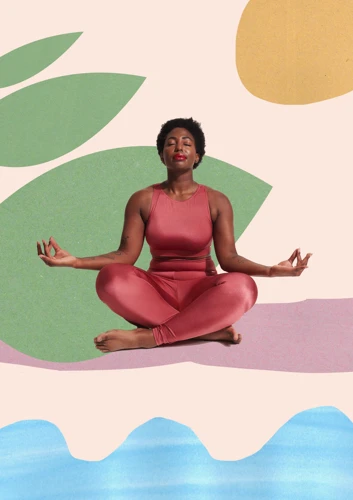
Before beginning a guided meditation practice, it’s important to prepare properly. This stage is crucial in setting the tone for your meditation session and ensuring that you are able to focus fully on the experience. Below we have outlined some helpful tips for preparing your space, selecting a meditation type, and finding a comfortable position. By following these steps, you’ll be able to enter your guided meditation session with a clear and calm mind.
Choose a Quiet Space
When practicing guided meditation, it is important to choose a quiet space that is free from distractions. This will help to create a calm and peaceful environment that will allow you to fully immerse yourself in the meditation practice. Here are some tips for selecting the perfect space for your meditation practice:
| Tip 1: | Choose a space that is quiet and free from distractions. This could be a spare room, a quiet corner of your home, or even outside in nature. |
| Tip 2: | Avoid selecting a space that is cluttered or messy. This can be distracting and may prevent you from fully relaxing and letting go during your meditation. |
| Tip 3: | Make sure that the space is comfortable and conducive to relaxation. You may wish to include some comfortable cushions or blankets to make the space more inviting. |
| Tip 4: | If possible, choose a space that is free from outside noise. If this is not possible, you may wish to use earplugs or play some calming music or sounds during your meditation. |
| Tip 5: | Set the mood for your meditation by using candles, incense, or other calming aromas. This can help to create a peaceful and calming atmosphere that will help you to relax and focus on your meditation. |
By taking the time to carefully choose a quiet space for your meditation practice, you will be able to fully engage with the guided meditation and reap the many benefits that it has to offer. So, take some time to consider which space is right for you and create a peaceful and relaxing environment that is conducive to a successful meditation practice.
Decide on the Type of Meditation
When practicing guided meditation, it is important to decide on the type of meditation that best suits your personal needs and preferences. There are several types of meditation, each with its own unique benefits and techniques. Here is an overview of some popular types of meditation, along with their respective benefits and techniques:
| Type of Meditation | Benefits | Techniques |
|---|---|---|
| Mindfulness meditation | – Reduces stress and anxiety – Increases self-awareness and focus |
– Focus on the present moment – Observe thoughts and feelings non-judgmentally |
| Body scan meditation | – Promotes relaxation and body awareness – Reduces physical tension and pain |
– Focus on each part of the body, starting from the feet up – Notice and release any tension or discomfort |
| Loving-kindness meditation | – Increases feelings of love, kindness, and empathy – Reduces feelings of anger, resentment, and anxiety |
– Visualize sending love and kindness to oneself and others – Use affirmations and positive phrases |
| Visualization meditation | – Enhances creativity and problem-solving skills – Increases feelings of calm, positivity, and motivation |
– Visualize a calming image, such as a beach or forest – Use all senses to imagine the image as vividly as possible |
| Transcendental meditation | – Reduces stress and anxiety – Improves brain function and focus |
– Repeat a mantra silently – Focus on the sound and vibration of the mantra |
Remember, there is no right or wrong type of meditation. Experiment with different types until you find one that resonates with you and brings you the most benefits.
Select a Comfortable Position
Before starting your guided meditation practice, it’s important to select a comfortable position that will allow you to fully relax and focus. The right position can help you maintain your physical and mental comfort throughout the meditation session.
It’s important to note that there is no single “correct” position for guided meditation. You should choose a position that feels good to you and allows you to comfortably stay in place for the duration of the meditation. Below are some common positions that you can consider:
| Position | Description |
| Seated Position | Sit on a cushion or chair with your back straight and your feet on the ground. Place your hands on your knees or in your lap. |
| Lying Down Position | Lie down on your back with your arms at your sides and your palms facing up. You can place a pillow under your head and knees for added comfort. |
| Supported Position | Sit on a cushion or folded blanket with your back against a wall or headboard. Place additional cushions or blankets under your knees or behind your back for support. |
| Lotus Position | Sit cross-legged with your hands resting on your knees. This position requires flexibility and should feel comfortable for you to maintain. |
Remember, the purpose of selecting a comfortable position is to help you keep your body relaxed and free from distractions during the meditation. Once you’ve found a comfortable position, take a few deep breaths and settle into your body before beginning your guided meditation session.
Guided Meditation Techniques
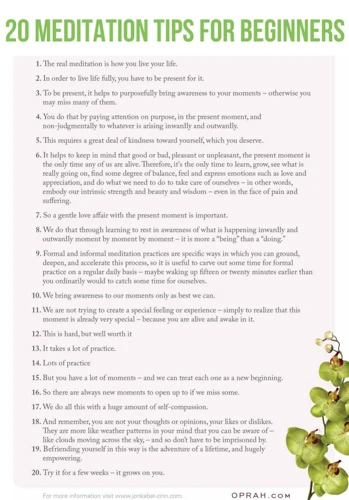
As you embark on the journey of guided meditation, it’s important to utilize various techniques to enhance your experience. These techniques will help you to relax your mind, reduce your stress levels, and achieve a deeper state of inner peace. While there are numerous techniques available, three of the most effective methods are breathing, body scan, and visualization. Let’s take a closer look at each of these techniques and how they can improve your overall guided meditation practice.
Breathing
One of the most basic and effective techniques in guided meditation is breathing. Proper breathing techniques can help relax your body, reduce stress and anxiety, and promote a sense of calm and focus. Here are some key tips to make the most of breathing techniques in guided meditation:
- Start by finding a comfortable seated or lying position, with your back straight and your hands resting on your knees or your chest.
- Close your eyes or keep them softly focused on a single point in front of you.
- Breathe in deeply through your nose, feeling your belly expand as you inhale.
- Hold your breath for a few seconds before slowly exhaling through your mouth, feeling your belly contract as you release the air.
- Keep your breaths slow and deliberate, focusing on each inhale and exhale.
- If your mind starts to wander, gently bring your attention back to your breath.
As you become more comfortable with breathing techniques, you can also experiment with different rhythms and patterns, such as extending your inhales and exhales, or counting the length of each breath. Remember that the goal is not to control your breath, but to simply observe it and let it guide your focus and relaxation.
Body Scan
One of the most common techniques used in guided meditation is the body scan. This technique involves bringing your attention to each part of your body, one at a time, from the top of your head to the tips of your toes. By doing so, you cultivate a deep sense of bodily awareness and relaxation.
Some expert tips for practicing the body scan technique effectively include:
- Start from the top: Begin the body scan by focusing on the top of your head. Bring your attention to your scalp, forehead, eyebrows, and eyes. Take a few deep breaths and release any tension you may be holding in these areas.
- Move systematically down your body: Once you’ve relaxed the muscles in your face, move down your body systematically, paying attention to each part of your body in turn. This might include your jaw, neck, shoulders, chest, arms, hands, stomach, back, hips, legs, and feet.
- Notice any sensations that arise: As you focus on each part of your body, notice any sensations that arise. You may feel warmth, tingling, or pulsing in certain areas. Alternatively, you may notice areas of tension or discomfort. Simply observe these sensations without judgment or interpretation.
- Release tension: If you do notice areas of tension or discomfort, try to release them by exhaling and relaxing those areas. Imagine the tension melting away as you breathe out.
- Breathe into each body part: As you focus on each area of your body, visualize your breath flowing into that area and nourishing it. Imagine that your breath is soothing and healing any discomfort or tension that you may be feeling.
- End with a full-body scan: Once you’ve worked your way down to your feet, take a few moments to zoom out and scan your entire body as a whole. Notice how each individual part feels, and how they work together to create a sense of wholeness and balance.
By practicing the body scan technique regularly, you will gain greater bodily awareness and a deeper sense of relaxation. This technique is particularly useful for those who struggle with anxiety, stress, or chronic pain. So next time you practice guided meditation, try incorporating the body scan technique into your routine.
Visualization
Visualization is one of the most popular and effective techniques used in guided meditation. It involves creating mental images that stimulate your senses and foster a deep sense of calm and relaxation. Here are some tips for practicing visualization during your guided meditation session:
- Choose a soothing image: When practicing visualization, it is important to choose an image that is calming and relaxing for you to focus on. This can be anything from a beautiful sunset to a peaceful beach scene.
- Engage all your senses: To make your visualization experience as immersive as possible, try to engage all your senses in the image you have chosen. Think about what you would feel, hear, smell, and taste if you were really there in that place.
- Use guided imagery: There are many guided meditations available that incorporate visualization techniques into their practice. They may prompt you to imagine a particular scene, or offer suggestions for what you might see or feel during your meditation practice.
- Allow yourself to fully immerse in the experience: In order to reap the full benefits of visualization during your meditation practice, it is important to let yourself fully engage in the experience. Try not to hold back or analyze too much – simply allow the image to unfold and envelop you.
- Be patient and persistent: Like any meditation technique, visualization may take some practice to fully master. Be patient with yourself, and try to incorporate visualization into your guided meditations consistently in order to reap the most benefits.
By following these visualization tips, you can deepen your meditation practice and cultivate a greater sense of inner peace and relaxation.
Maintaining Focus and Awareness
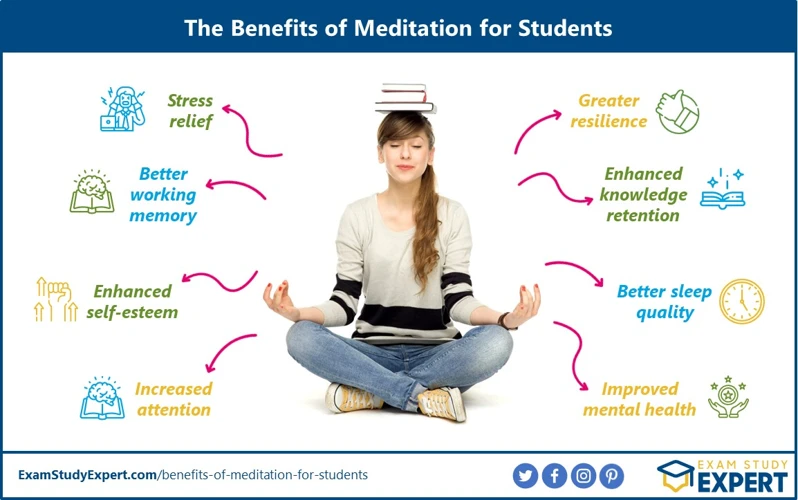
As you begin your guided meditation practice, it’s essential to maintain focus and awareness to reap the full benefits of this mindfulness exercise. Throughout your meditation session, you may encounter distracting thoughts, physical sensations, or emotions that can pull your mind away from the present moment. However, with the following expert tips, you can learn how to cultivate a sense of presence and stay engaged with your meditation practice. So let’s delve into the techniques for maintaining clarity of mind and awareness during guided meditation.
Focus on Your Breath
One of the key aspects of practicing guided meditation successfully is to maintain focus and awareness throughout the session. One effective way to do this is by focusing on your breath. Here are some steps to follow while focusing on your breath during guided meditation:
| Step 1: | Find a comfortable seated position in a quiet space where you will not be disturbed. |
| Step 2: | Close your eyes and bring your awareness to your breath. |
| Step 3: | Notice the sensation of the air as it enters and exits your nose or mouth. |
| Step 4: | Focus your attention on the rise and fall of your chest or belly as you inhale and exhale. |
| Step 5: | Allow your breath to flow naturally without trying to control it. |
| Step 6: | If your thoughts wander, gently bring your attention back to your breath, without judgment. |
| Step 7: | Continue focusing on your breath for the duration of the meditation session. |
Focusing on your breath can help you stay present in the moment, calm your mind, and promote relaxation. It is a simple yet effective technique that can be used by anyone, regardless of experience with meditation. With practice, you can learn to maintain focus on your breath throughout your day, helping you to stay centered and grounded even in stressful situations.
Scan Your Body Regularly
During guided meditation, it’s important to scan your body regularly to maintain awareness and relaxation. Here are some steps you can take to effectively scan your body:
- Start at the top – Begin by focusing on the top of your head and work your way down to your toes. Pay attention to any areas of tension or discomfort.
- Take your time – Don’t rush through the body scan. Take your time and spend a few moments on each area of the body.
- Breathe deeply – Take deep breaths as you focus on each area of the body. This can help to release any tension or stress you may be holding onto.
- Release tension – As you focus on each area of the body, consciously release any tension you may be holding in that area. Imagine the tension melting away with each breath.
- Be present – Stay present and focused on the body scan, bringing your attention back to the present moment if your mind starts to wander.
- End with your feet – Once you reach your toes, take a few deep breaths before ending your body scan. Take a moment to notice how your body feels and any changes in tension or discomfort.
Regularly scanning your body during guided meditation can help you become more aware of areas of tension and learn to release them. It’s a powerful tool that can enhance the benefits of guided meditation and leave you feeling relaxed and rejuvenated.
Observe Your Thoughts
One of the biggest challenges in guided meditation is keeping your mind from wandering. As you focus on your breath or the visualization, your mind may still wander to random thoughts. However, it’s important not to get frustrated with yourself if this happens. Instead, observe your thoughts as if they are floating by on a cloud. Here are some tips for observing your thoughts during guided meditation:
| Tips for Observing Your Thoughts |
| If a thought comes up, simply acknowledge it and then let it go. |
| Try to avoid judgment or analyzing your thoughts during the meditation. They are just passing clouds in your mind. |
| Some meditators find it helpful to label their thoughts by saying “thinking” or “feeling” when a thought arises. This helps them to observe the thought without getting lost in it. |
| If you find yourself getting caught up in a thought, try to gently return your focus back to the breath, the body scan or visualization. |
| Remember that observing your thoughts is a practice, just like the meditation itself. Be patient with yourself and keep practicing! |
Observing your thoughts during guided meditation takes practice, but it’s a valuable tool for staying present and improving your focus. By acknowledging your thoughts without judgment, you can learn to let go of distractions and remain in a state of calm awareness.
Embracing Silence and Stillness
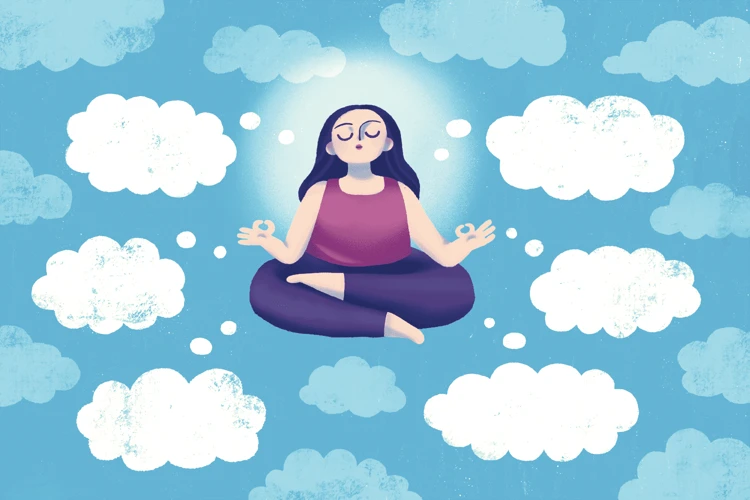
As much as guided meditation involves actively paying attention to thoughts and sensations, it also calls for embracing silence and stillness. During this part of the practice, you’ll find yourself in a state of tranquility that may feel unfamiliar at first. But with the right mindset and techniques, you’ll begin to appreciate these moments of quietude, which can enable you to cultivate self-awareness and inner peace. Let’s explore some strategies for fully embracing the silence and stillness in your guided meditation practice.
Allowing Thoughts to Pass
During guided meditation, it’s common for the mind to wander and for thoughts to arise. The key to practicing effectively is to allow these thoughts to pass without getting caught up in them. This can be achieved through the following techniques:
- Notice the thought: When a thought arises, acknowledge its presence without judgment. Simply observe it and take note of its nature.
- Label the thought: Give the thought a simple label or tag, such as “planning” or “fantasy”. This helps to create some distance between you and the thought.
- Release the thought: Once you’ve labeled the thought, let it go without dwelling on it. Imagine it floating away like a cloud, or disappearing into the distance.
- Return to your focus: After releasing the thought, gently redirect your attention back to your breath or body scan, or whatever your focus is in your meditation practice.
It’s important to remember that thoughts will naturally arise during meditation, and that this is completely normal. The key is to avoid getting caught up in them or becoming frustrated by them. The more you practice letting thoughts pass by without getting attached to them, the easier it will become to maintain a state of inner calm and focus during your meditation sessions.
Finding Comfort in Stillness
As you continue to practice guided meditation, you may find that the hardest part is “finding comfort in stillness.” This can be a challenging task, especially for those who are used to being constantly on the go. However, it is an important aspect of meditation, as it helps you to quiet your mind and focus on the present moment.
One way to find comfort in stillness is to focus on your breath. Breathing is an essential part of meditation, and by paying close attention to your breath, you can calm your mind and relax your body. As you inhale and exhale, focus on the sensation of the breath moving through your body. If your mind wanders, gently bring your focus back to your breath.
Another way to find comfort in stillness is to practice acceptance and non-judgment. It is natural for thoughts to arise during meditation, and you may find yourself judging yourself or your thoughts. However, it is important to remember that there is no “right” or “wrong” way to meditate. Instead, simply observe your thoughts without judgment, and allow them to pass by like clouds in the sky.
Finally, allowing thoughts to pass can also help you find comfort in stillness. It is common for the mind to wander during meditation, but by acknowledging your thoughts and then allowing them to pass, you can return your focus to the present moment. You may find that your mind becomes quieter and calmer with practice, allowing you to find greater comfort in stillness.
Ways to Find Comfort in Stillness
| Focus on your breath |
| Practice acceptance and non-judgment |
| Allow thoughts to pass |
Practicing Acceptance and Non-Judgment
When practicing guided meditation, it’s important to cultivate a mindset of acceptance and non-judgment. This means acknowledging and accepting whatever thoughts, emotions, or sensations arise during your meditation practice. Use these tips to help you practice acceptance and non-judgment during your meditation sessions:
| Tip 1: | Focus on observing your thoughts and emotions without judging them. When a thought or emotion arises, simply observe it without getting caught up in it or trying to change it. Acknowledge it and let it pass on its own. |
| Tip 2: | Allow yourself to experience whatever arises, without trying to control or suppress it. Remember that meditation is a non-judgmental practice, meant to help you connect with your inner self and promote greater awareness and understanding. |
| Tip 3: | Practice self-compassion and kindness towards yourself. If you find yourself getting caught up in a thought or feeling, gently remind yourself to return your focus to your breath or scan your body. Avoid getting frustrated or upset with yourself for getting off track. |
| Tip 4: | Treat your thoughts and emotions as passing clouds in the sky, rather than as fundamental aspects of your being. Remember that thoughts and emotions are not permanent, but rather temporary states that come and go. Allow yourself to simply observe them without attaching significance or meaning to them. |
By practicing acceptance and non-judgment during your guided meditation sessions, you can cultivate a deeper sense of inner calm and self-awareness. Embrace the present moment, and use your meditation practice as a way to connect with your innermost self and promote greater well-being in your everyday life.
Closing Your Guided Meditation Session
As your guided meditation practice comes to an end, it’s important to close the session mindfully and with intention. This allows you to gently transition back to the present moment and carry the benefits of your practice with you throughout the rest of your day. Here are some expert tips to help you end your guided meditation session smoothly and with a sense of grounding.
Take Your Time to Come Back to the Present Moment
After completing your guided meditation session, it’s important to take your time to come back to the present moment. You should avoid rushing back to your daily routine after such a peaceful and calming experience. Taking a few moments to transition back will allow you to carry the benefits of your meditation into the rest of your day.
Here are some tips to help you come back to the present moment:
| Tip | Explanation |
|---|---|
| Start Slowly | Start by taking a few slow and deep breaths before opening your eyes. This will help you ease back into your surroundings. |
| Reflect on Your Experience | Take a few moments to reflect on your meditation experience. Think about what you learned or how you felt during the session. This will help you carry the benefits of your meditation into your daily life. |
| Move Your Body | Stretch your arms and legs, and move your body slowly. This will help you release any tension in your muscles and increase blood flow throughout your body. |
| Take Your Time | Don’t rush to get up and start your day. Take a few moments to simply sit and be present. Savor the feelings of calmness and relaxation that you experienced during your meditation practice. |
By taking your time to come back to the present moment after your guided meditation session, you can carry the benefits of your practice with you throughout your day and improve your overall well-being.
Reflect on Your Experience
After you have finished your guided meditation session, it is important to take some time to reflect on your experience. This can help you understand your thoughts and emotions during the meditation, and help you make adjustments for future sessions.
One way to reflect on your experience is to ask yourself some guiding questions. Here are some examples:
| Guiding Questions: | Explanation: |
|---|---|
| What thoughts came up during the meditation? | This helps you recognize any patterns or recurring thoughts that may be affecting your mental state. |
| What emotions did I experience? | Identifying your emotions can help you better understand your reactions to stressors, and how to better manage them. |
| Did I find it difficult to stay focused? | This can indicate areas where you may need more practice, such as maintaining concentration or managing distractions. |
| Did I feel any physical sensations? | Awareness of physical sensation can help you better recognize when you are tense or anxious, and how to soothe those feelings. |
| What felt most helpful in the meditation? | This can help you identify which techniques work best for you, and how to incorporate them into future practice. |
As you reflect on your experience, try to do so without judgment or criticism. Remember that meditation is a practice, and it takes time and effort to develop. The more you reflect on your experiences, the better you can understand yourself and your practice.
Conclusion
After reading this article, you should now have a good understanding of what guided meditation is, its benefits, and how to practice it effectively. Guided meditation can be a powerful tool for reducing stress, improving mental and emotional well-being, and enhancing focus and concentration.
However, practicing guided meditation requires commitment, patience, and consistency. You must find a quiet space, choose a comfortable position, select the type of meditation that works for you, and remain focused on your breath and body throughout the session.
In addition, embracing stillness and silence and accepting your thoughts and feelings without judgement is a crucial part of the guided meditation experience. And finally, taking the time to reflect on your practice and the benefits it brings can help you stay motivated and committed to the practice.
Overall, guided meditation can be a life-changing practice that can help you reconnect with your mind, body, and spirit. If you are looking to reduce stress, improve focus and well-being, and enhance your overall quality of life, then guided meditation may just be the perfect tool for you. So why not start practicing today and see how it can benefit you personally?
Frequently Asked Questions
What is guided meditation?
Guided meditation is a form of meditation where the practitioner is led through a meditation session by a narrator or teacher.
What are the benefits of guided meditation?
Guided meditation can help reduce stress, increase relaxation, improve focus and concentration, and promote overall well-being.
What do I need to prepare for guided meditation?
You will need a quiet space, a comfortable position, and possibly some props such as a cushion or blanket.
How do I choose the type of meditation for a guided session?
Choose a meditation that aligns with your intentions for the practice, such as breath awareness, body scan, or visualization.
Why is it important to maintain focus and awareness during guided meditation?
Maintaining focus and awareness can help you achieve a deeper state of relaxation and mindfulness, and enhance the benefits of the practice.
How do I embrace silence and stillness during guided meditation?
You can embrace silence and stillness by allowing thoughts to pass without judgment, finding comfort in stillness, and practicing acceptance.
Do I need to have prior meditation experience to do guided meditation?
No, guided meditation is accessible to individuals of all levels of meditation experience.
What should I do if I find myself getting distracted during guided meditation?
If you find yourself getting distracted, simply return your focus to your breath or the guidance provided by the narrator.
How long should I practice guided meditation?
You can practice guided meditation for as long as you prefer, though it is recommended to start with shorter sessions and gradually increase the duration over time.
What should I do after a guided meditation session?
Take your time to come back to the present moment, reflect on your experience, and carry any feelings of relaxation and mindfulness into your day.

